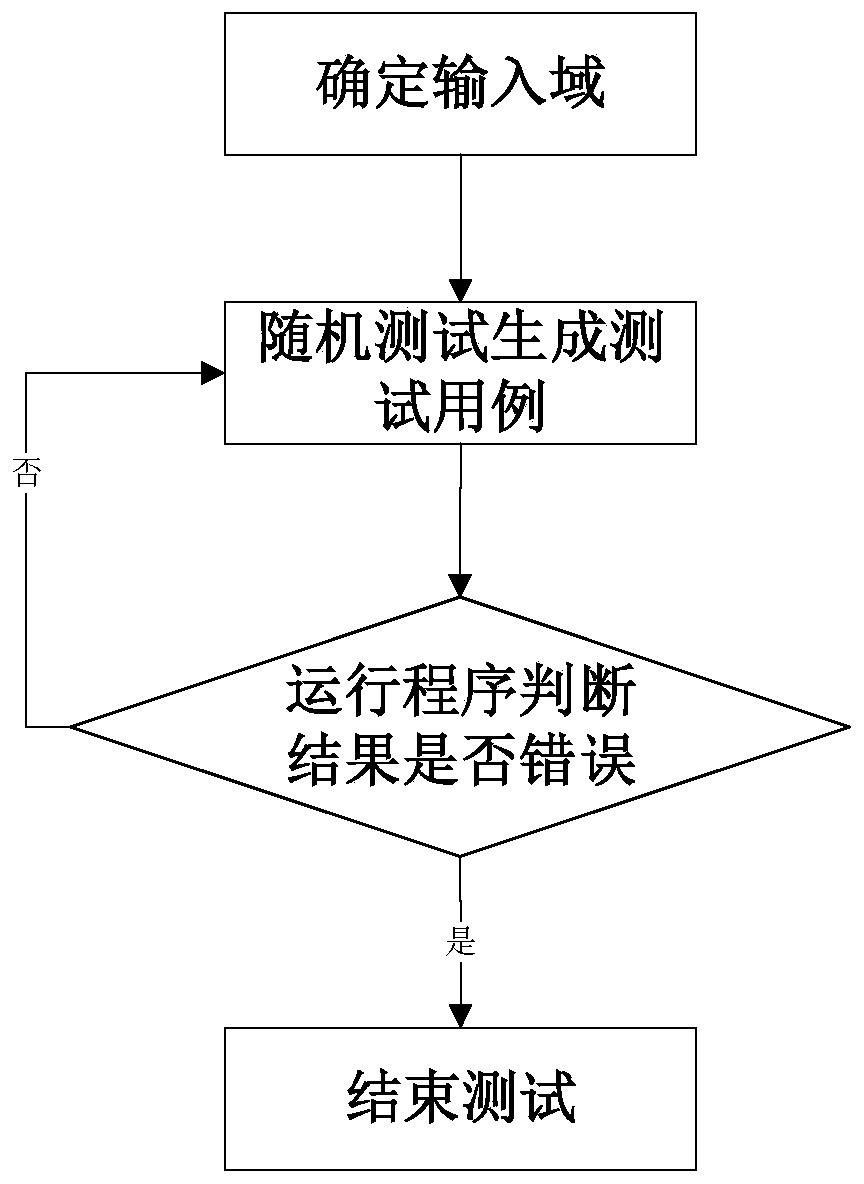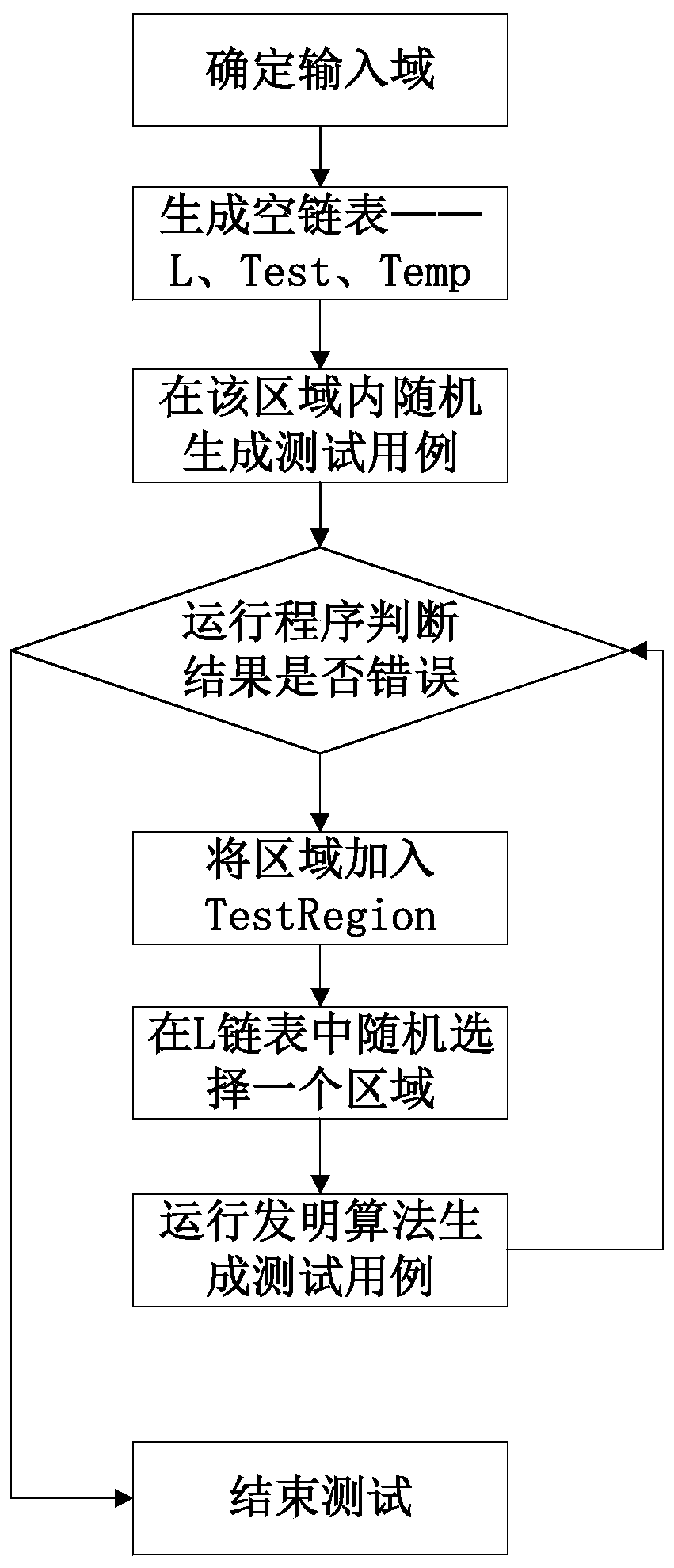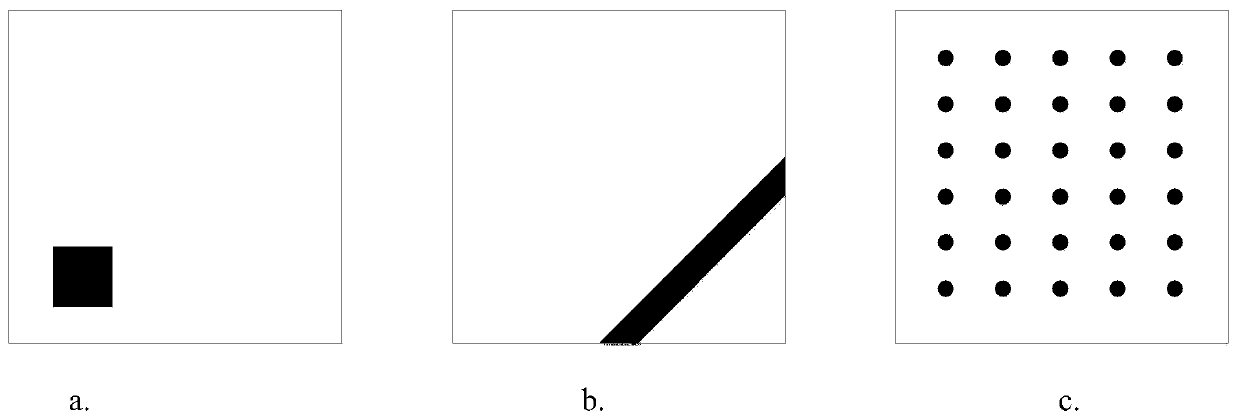Self-adaptive random test method based on iteration area equipartition and positioning
A random testing and self-adaptive technology, applied in software testing/debugging, error detection/correction, instrumentation, etc., can solve problems such as large time overhead and poor performance, and achieve small time overhead, solve blindness, and improve performance Effect
- Summary
- Abstract
- Description
- Claims
- Application Information
AI Technical Summary
Problems solved by technology
Method used
Image
Examples
Embodiment Construction
[0041] The present invention will be further described below in conjunction with the accompanying drawings and embodiments. It should be noted that the described embodiments are only intended to facilitate the understanding of the present invention and have no limiting effect on it.
[0042] The present invention aims at improving the efficiency of random testing, and provides an adaptive random testing method based on iterative area equalization and positioning to effectively detect software bugs. To verify the method of the present invention, a two-dimensional simulation experiment is used to illustrate it .
[0043] like figure 2 Shown, the method that the present invention proposes comprises the steps:
[0044] Step 1, generate a two-dimensional square as the input domain, where the range of each dimension is (0-1), and generate a square failure area with a failure rate a (preset by experiment);
[0045] Step 2, initialize the region R (the entire input field), initiali...
PUM
 Login to View More
Login to View More Abstract
Description
Claims
Application Information
 Login to View More
Login to View More - R&D Engineer
- R&D Manager
- IP Professional
- Industry Leading Data Capabilities
- Powerful AI technology
- Patent DNA Extraction
Browse by: Latest US Patents, China's latest patents, Technical Efficacy Thesaurus, Application Domain, Technology Topic, Popular Technical Reports.
© 2024 PatSnap. All rights reserved.Legal|Privacy policy|Modern Slavery Act Transparency Statement|Sitemap|About US| Contact US: help@patsnap.com










